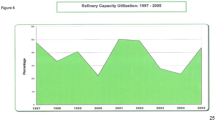Abstract
In the winter months of 1983, approximately 1000 gallons of diesel fuel had flowed along an asphalt parking lot of a commercial establishment towards a surface drain near an open creek. Investigations led to the discovery of an underground storage tank leaking diesel fuel. Exploratory borings showed that contamination was near the surface horizon and the capillary zone of the water table. Hydrocarbon quantities ranged up to 1500 mg/kg of soil. The plume continued to move in an eastward direction toward the surface water of the creek. A laboratory study indicated relatively high numbers of hydrocarbon-oxidizing organisms relative to glucose-utilizing microorganisms in the unsaturated vadose zone. Bioreclamation was initiated in April 1984 by injecting nutrients (nitrogen and phosphorus) and hydrogen peroxide and terminated in October 1984 upon no detection (<1 mg/kg) of hydrocarbons. A verification boring within the vicinity of the contaminated plume confirmed that residual contamination had attained background levels. The monitoring program was terminated in January 1987.
Similar content being viewed by others
Literature cited
American Petroleum Institute. 1987. Field study of enhanced subsurface biodegradation of hydrocarbons using hydrogen peroxide as an oxygen source. American Petroleum Institute Publ. 4448.
Cansfield, P. E., and G. J. Race. 1978. Degradation of hydrocarbon sludges in the soil.Canadian Journal of Soil Science 58:339–345.
Casida, L. E., D. A. Klein, and T. Sanfora. 1964. Soil dehydrogenase activity.Soil Science 98:371–376.
Curl, H., Jr., and K. O'Connell. 1977. Chemical and physical properties of refined petroleum products. NOAA Technical Memorandum ERL MESA-17, pp. 1–35.
Dibble, J. T., and R. Bartha. 1979. Rehabilitation of oil-inundated agricultural land: A case history.Soil Science 128:56–60.
Dotson, G. K., R. B. Dean, W. B. Cooke, and B. A. Kennar. 1971. Land spreading, a conserving and non-polluting method of disposing of oily wastes.In S. H. Jenkins (ed.), Proceedings of the 5th International Water Pollution Research Conference, Vol. 1, Sec. II-36/1-36/15. Fairview Park, Elmsford, NY. Pergamon Press, NY.
Frankenberger, W. T., Jr., and J. B. Johanson. 1982. Influence of crude oil and refined petroleum products on soil dehydrogenase activity.Journal of Environmental Quality 11:602–607.
Jamison, V. W., R. L. Raymond, and J. O. Hudson. 1976. Biodegradation of high-octane gasoline. Pages 187–196in J. M. Sharpley and A. M. Kaplan (eds.), Proceedings of the 3rd International Biodegradation Symposium, Kingston, Rhode Island, August 17–23, 1975. Applied Science Publishers, London.
Jensen, V. 1975. Decomposition of oily wastes in soil. Pages 278–287in G. Kilbertus et al. (eds.), Proceedings of the 1st International Conference on Biodegradation Humification, 1974. Nancy, France. Pierron, Sarreguemines, France.
Kincannon, C. B. 1972. Oily waste disposal by soil cultivation process. Research Report EPA-R2-72-110. Environmental Protection Technology Series, US Environmental Protection Agency, Washington, DC. 65 pp.
Kretschek, A., and M. Krupka. 1984. Biodegradation as a method of hazardous waste treatment in soil and subsurface environments.In Hazardous wastes and environmental emergencies, March 12–14, 1984, Houston, Texas.
Minugh, E. M., J. J. Patry, D. A. Keech, and W. R. Leek. 1983. A case history: Cleanup of a subsurface leak of refined product. Pages 397–403in Oil Spill Conference Proceedings, February 28–March 3, 1983, San Antonio, Texas. Publication No. 4356. American Petroleum Institute, Washington DC.
Pritchard, P. H., R. M. Ventullo, and J. M. Suflita. 1976. The microbial degradation of diesel fuel oil multistage continuous culture system, Pages 67–87in J. M. Sharpley and A. M. Kaplan (eds.), Proceedings of the 3rd International Biodegradation Symposium, Kingston, Rhode Island, August 17–23, 1975. Applied Science Publishers, London.
Raymond, R. L., V. W. Jamison, and J. O. Hudson. 1967. Microbial hydrocarbon co-oxidation.Applied Environmental Microbiology 15:857–865.
Raymond, R. L., J. O. Hudson, and V. W. Jamison. 1976. Oil degradation in soil.Applied Environmental Microbiology 31:522–535.
Sandvik, S., A. Lode, and T. A. Pedersen. 1986. Biodegradation of oily sludge in Norwegian soils.Applied Microbial Biotechnology 23:297–301.
Standard Methods for the Examination of Water and Wastewater. 1985. APHA, AWWA, WPCF. Oil and grease. A partition-gravimetric method, 16th ed. p. 497. American Public Health Association, Washington, DC.
US Environmental Protection Agency. 1982. Test methods for evaluating solid waste. Physical/chemical methods. EPA SW 846, Cincinnati, Ohio.
US Environmental Protection Agency. 1983. Methods for chemical analysis of water and wastes. EPA-600-4-79-020, Cincinnati, Ohio.
Author information
Authors and Affiliations
Rights and permissions
About this article
Cite this article
Frankenberger, W.T., Emerson, K.D. & Turner, D.W. In situ bioremediation of an underground diesel fuel spill: A case history. Environmental Management 13, 325–332 (1989). https://doi.org/10.1007/BF01874911
Issue Date:
DOI: https://doi.org/10.1007/BF01874911




